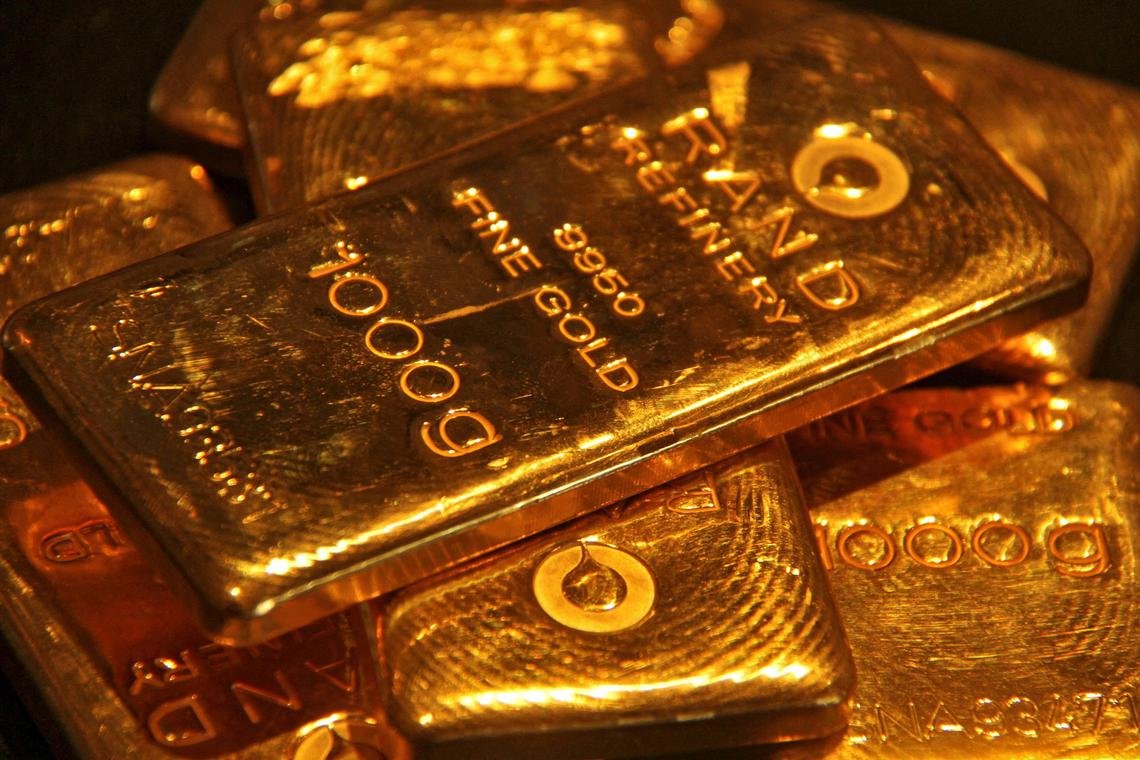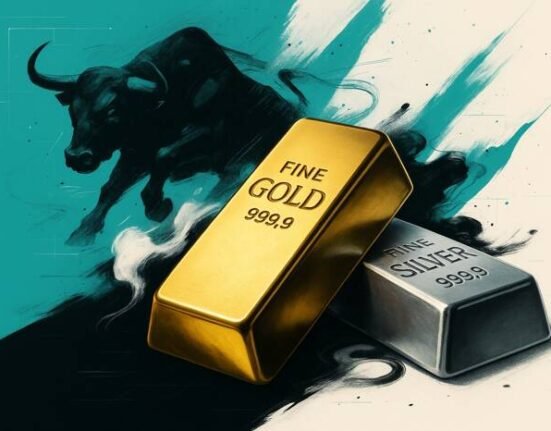SINGAPORE – Investors who bought into gold over the past year would have reaped a golden harvest as prices for the precious metal have risen almost 50 per cent.
It hit a new high of US$3,435.35 per troy ounce on June 13.
Gold’s steady rise has attracted the attention of new investors, including retail investors, insurers and wealthy individuals, hoping to find their own pot of gold.
Ms Priyanka Sachdeva, senior market analyst at Phillip Nova, an affiliate of Singapore’s investment manager PhillipCapital Group, said the precious metal is not just a hedge against inflation but also a hedge against uncertainty.
She added that gold should be viewed as a strategic allocation by investors who want to build a portfolio that is resilient for the long term.
However, a troy ounce of gold currently costs more than US$3,400 and would be an expensive investment for a retail investor on a tight budget.
But fractionalisation has helped to make gold more affordable and accessible for this group of investors, said Mr Vasu Menon, managing director of investment strategy at OCBC Bank.
Fractionalisation essentially means that a troy ounce of physical gold is split into smaller denominations or fractions so the investment outlay is brought down to a fraction of the cost.
A troy ounce is used to weigh precious metals and is equivalent to 31.1 grams.
Ms Sachdeva said online platforms now offer access to gold in denominations as small as 0.1g.
So, instead of committing, say, around US$3,400 into a troy ounce of gold, the investor puts in around US$10.90 for 0.1g of the precious metal.
Gold-backed exchange-traded funds (ETFs) give retail investors another option to hold a fraction of an ounce of gold.
They do not own the physical gold asset in this instance, as they are buying the ETF which tracks the underlying gold price.
OCBC’s Mr Menon said ETF shares are liquid, compared with physical gold, because they can be bought and sold quickly on a stock exchange during market trading hours.
The SPDR Gold Shares ETF, managed by State Street Global Advisors, trades on many stock exchanges, including in Singapore, New York, Tokyo and Hong Kong.

In Singapore, the ETF is available in the US and Singapore-dollar versions on the Singapore Exchange.
OCBC allows retail investors with its precious metals trading account to buy and sell as little as 0.31g of gold on its digital app.
They can buy and sell in Singapore dollars or in foreign currencies and do not pay sales charges or custody fees.
Customers are issued paper bullion, which holds the same value as physical gold, the bank states on its website.
Mr Menon said the number of OCBC customers who invest in gold has more than doubled in April 2025 from a year ago. Personal banking or retail clients make up the bulk or 90 per cent of gold investors.
The average amounts invested grew more than 30 per cent year on year in April to bring investment allocation to gold up by close to five percentage points.
UOB has a similar account, the gold savings account, which allows retail customers to buy and sell as little as 5g of gold.
Investors can choose to convert their gold holdings into 100g Argor gold bars for a conversion fee of $100 per piece, according to the bank’s website.
Mr Kelvin Ng, head of global markets at UOB, said its gold savings accounts recorded an 85 per cent jump in the average number of buy transactions in the first four months of 2025 compared with the same period in 2024.
He added that the average monthly transacted weight of physical gold rose approximately 64 per cent between January and April this year, from a year ago.
UOB customers can also buy physical gold bars or gold coins and put it in the bank’s safe deposit boxes.
Outside Singapore, Phillip Nova has observed a surge in retail participation in 2025, especially in Asia and parts of Europe.
Ms Sachdeva said the typical retail investor now includes a much younger demographic of digitally native investors, between 25 and 40 years old, who are buying fractional gold on mobile platforms.
The trend is apparent in India and China, where fractionalisation has lowered entry barriers to gold investment for first-time investors, she added.
Mr Robin Tsui, gold strategist for the Asia-Pacific region at State Street Global Advisors, said the younger generation in China are buying gold as an investment because its prices have done well in the last five years, so these youngsters think they can make some money out of it.
“Youngsters, university students, fresh graduates, they are all buying gold,” he added.
Wealthy individuals and family offices are also starting to take notice of gold.
Mr Tsui, who is based in Hong Kong, said he met representatives of a few family offices when he was in Singapore in May.
“Singapore is a hub for family offices. That is why Singapore is quite important for us to tap into the family offices here,” he added.
Ms Sachdeva said Phillip Nova has seen a significant pickup in demand from high-net-worth individuals (HNWIs) who want to hedge against the volatile US dollar and inflation.
She added that family offices are traditionally equity-heavy. However, they are gradually exploring strategic allocations to gold as part of a broader strategy to diversify their risks, she said.
The 2025 Global Family Office report from UBS showed that allocations to precious metals rose on average globally, from 1 per cent in 2023 to 2 per cent in 2024.
While that allocation remains a small part in an HNWI’s portfolio, the report found that more than a fifth or 21 per cent of family offices expect to increase their allocation to gold and precious metals over the next five years, while 58 per cent of family offices intend to maintain their allocation in gold and precious metals at current levels.
UBS gathered insights from 317 single-family offices across more than 30 global markets in the first four months of 2025. The family offices included 34 in South-east Asia.
State Street’s Mr Tsui said he has also been getting more inquiries from insurance companies in Singapore and other parts of Asia since the second half of 2024.
He added that more interest flowed in after China allowed insurance companies to invest in gold for the first time.
Under a pilot project that was announced on Feb 7, 2025, 10 insurance firms, including China Life Insurance, New China Life Insurance and several subsidiaries of Ping An, will be allowed to allocate up to 1 per cent of their assets to gold.
“Insurance companies are going to make a huge difference because the potential money from insurance companies will be a lot bigger than family offices,” Mr Tsui said.
He added that investors have started to realise that they need to have some investment in gold, no matter how small. It could be 1 per cent, 2 per cent or 3 per cent.
“The general trend is that investors are willing to look into gold. If they have gold, they are looking to increase, not decrease,” Mr Tsui said.
At the same time, global central banks remain net buyers of gold, said Ms Sachdeva.
They have been adding to their global gold reserves every year since 2010, according to the World Gold Council.
In the first quarter of 2025, the world’s central banks bought another 244 tonnes of gold.
China’s central bank, the People’s Bank of China (PBOC), was one of the top five purchasers of gold during that quarter.
The PBOC added 12.75 tonnes of gold to its reserves, nudging gold’s share of its total reserves to 6.5 per cent.
India’s central bank was also among the top five, adding 3.42 tonnes of gold to its reserves, bringing gold’s share of its total reserves to around 13.5 per cent.
Join ST’s Telegram channel and get the latest breaking news delivered to you.







